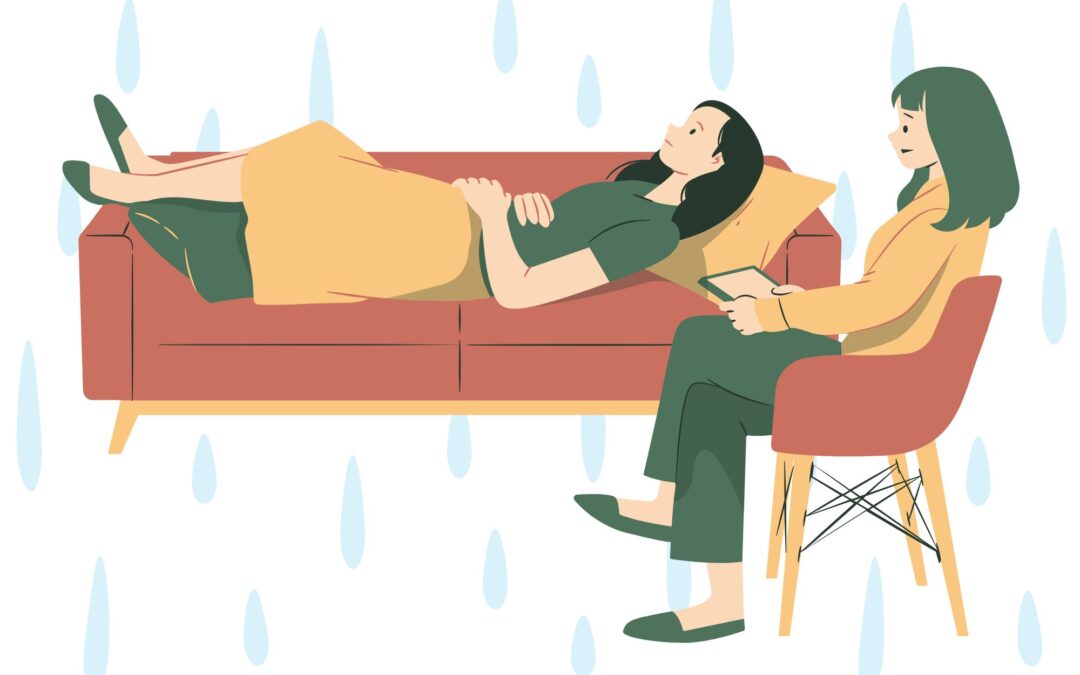Therapy is a topic often surrounded by myths, misconceptions, and societal stigma. Whether it’s from older generations, well-meaning but misinformed friends, or the unfiltered opinions of social media, many people form judgments about therapy without ever experiencing it first-hand. As therapists, it is essential to address these concerns, as such myths may discourage individuals from seeking the support they need.
In this article I hope to help in debunking some of the more common myths about therapy and encourage a better understanding of its true purpose and benefits.
- Therapy is just talking.
One of the most widespread misconceptions is that therapy is merely “talking” to someone. From an outsider’s perspective, it’s understandable how this might appear to be true. However, therapy involves much more than casual conversation—it is designed to bring about meaningful change. For example, Cognitive Behavioral Therapy (CBT), one of the most extensively researched and widely used approaches, is known for being practical and action-oriented. In CBT, clients may be assigned tasks to complete between sessions, receive training in specific skills, and engage in interventions they can apply in their daily lives. Therapy is far from passive; it is an active, collaborative process tailored to address individual needs.
- Therapy is only for major problems (“I’ll go when things get bad“).
Another common misconception is that therapy is only necessary when someone reaches a breaking point or faces severe mental health challenges. This belief often prevents people from seeking help early, allowing smaller issues to grow into larger, more complex problems. The truth is, therapy is just as beneficial for everyday challenges, such as managing stress, navigating relationship difficulties, or making career decisions. Addressing these concerns early can prevent them from escalating and provide individuals with tools to maintain balance and resilience.
- I don’t need therapy, I have my friends.
It’s common to hear people say, “I don’t need therapy; I have my friends to talk to.” While supportive friends and loved ones are incredibly important, they are not a substitute for therapy.Therapists are trained professionals who provide a neutral, unbiased perspective and use evidence-based methods to guide clients toward personal growth and problem-solving. Relying solely on friends or family can create one-sided dynamics and put undue strain on these relationships. Ultimately, it is not the responsibility of loved ones to manage someone’s mental health—therapy provides a dedicated space for this work.
- If I start therapy I’ll have to go forever.
Many people hesitate to start therapy because they fear it will become a lifelong commitment. In reality, the duration of therapy varies greatly depending on individual needs and goals. Short-term approaches, like CBT, often consist of 12–20 sessions and are designed to provide clients with tools to address specific challenges effectively. Others may seek therapy to cope with a difficult life event and choose to discontinue once they feel more stable. Some individuals opt for longer-term therapy to work through deeper issues or ongoing concerns. Clients can also transition from weekly sessions to bi-weekly or monthly check-ins as their progress stabilizes. Therapy is flexible and evolves based on the client’s needs.
- My therapist will tell me what to do.
Another misconception is that therapists give direct advice or tell clients how to solve their problems. In truth, therapy is not about prescribing solutions but about empowering clients to find their own answers.
Therapists act as guides, helping clients explore their thoughts, feelings, and behaviors in a structured way. They facilitate self-awareness and provide tools for problem-solving but ultimately leave decisions to the individual.
- Therapy is all about the past.
Some people avoid therapy because they believe it will focus solely on dissecting childhood experiences or past traumas. While exploring the past can be a valuable part of therapy, it is not the sole focus.
Many therapeutic approaches emphasize the present and future, helping clients address current challenges and set goals for personal growth. During the initial sessions, therapists typically collaborate with clients to determine what they want to achieve and whether their focus should be on the past, present, or a combination of both.
Therapy is a versatile and transformative tool that can support individuals in navigating life’s complexities, regardless of the severity of their challenges. By dispelling myths and fostering a more accurate understanding of what therapy entails, we can reduce stigma and encourage more people to seek the help they deserve.
If you’ve ever considered therapy but hesitated due to misconceptions, remember that it is a deeply personal and customizable experience designed to meet your unique needs and goals.

